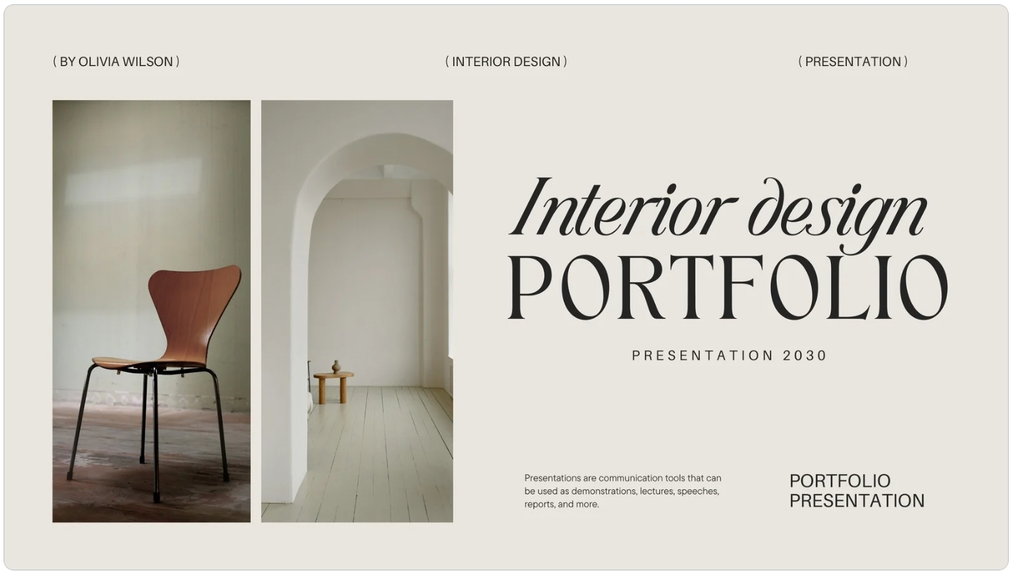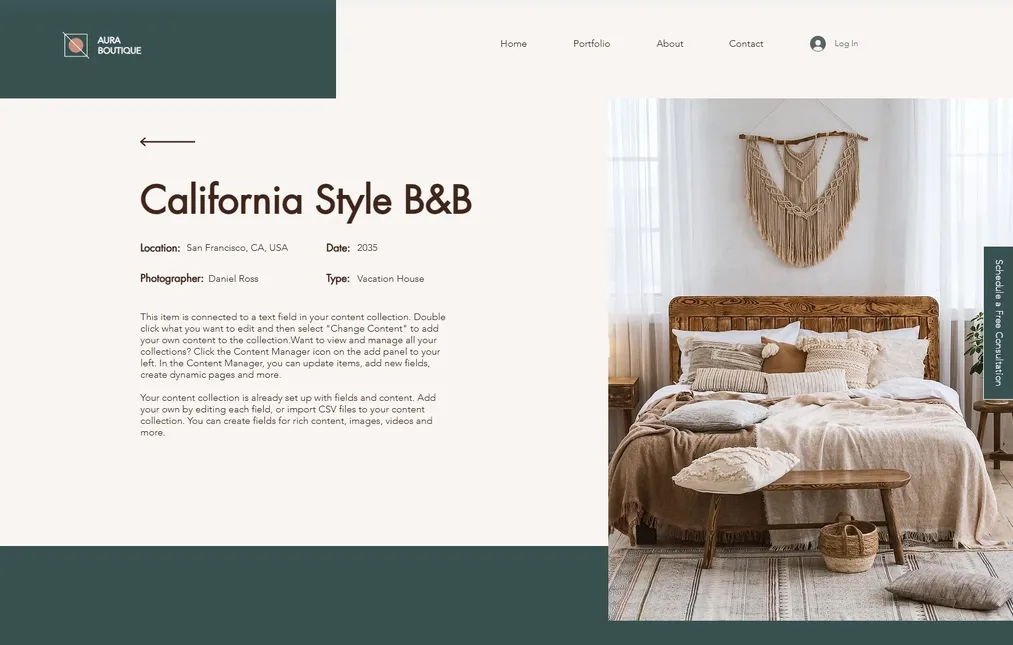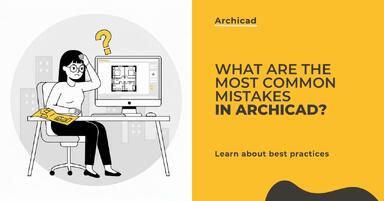Publication date: 12-02-2025 | Update date: 12-02-2025 | Author: Mateusz Ciećwierz
Architect and Interior Designer Portfolio – How to Create It to Attract Clients?
A well-prepared portfolio is a key element in building a career as an architect and interior designer. It allows potential clients and employers to evaluate your skills, style, and professionalism. In the age of digitalization and a competitive market, it is extremely important for a portfolio to not only feature the best works but also to be presented in an attractive and thoughtful manner. So, how can you create a portfolio that will set you apart in the market and attract new clients?
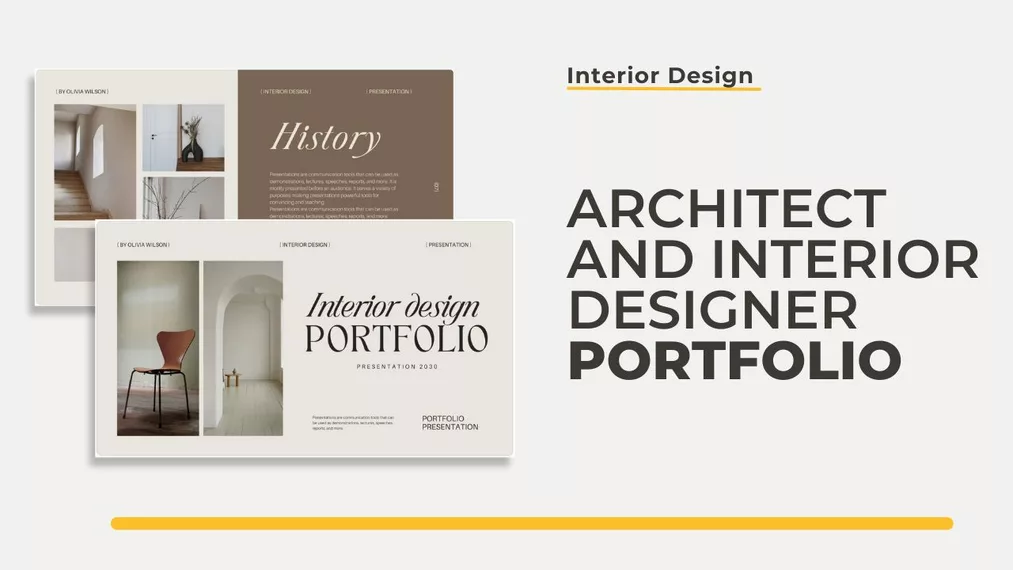
Key Takeaways
- Portfolio is the showcase of your brand and skills.
- It should be aesthetic, well-organized, and clear, to instantly attract the audience's attention.
- Adapt the portfolio format to the audience – digital version suits online clients, while a printed one can be useful for business meetings.
- Showcasing the best work is crucial – less is more, so select projects to highlight your unique style.
- Context matters – each project should include a description of the creative process, inspirations, and technologies used.
- Regular portfolio updates are necessary to display the latest skills and align the presentation with evolving market trends.
Why Is Portfolio Important?
Portfolio is not just a collection of your projects but also a representation of your brand. In the creative industry, the visual presentation of your skills holds significant importance. A professionally crafted portfolio can be crucial in securing prestigious assignments or jobs at renowned companies. A well-designed portfolio signifies your experience, creativity, and work approach, thus it's essential to pay attention to every aspect – from image quality to presentation style.
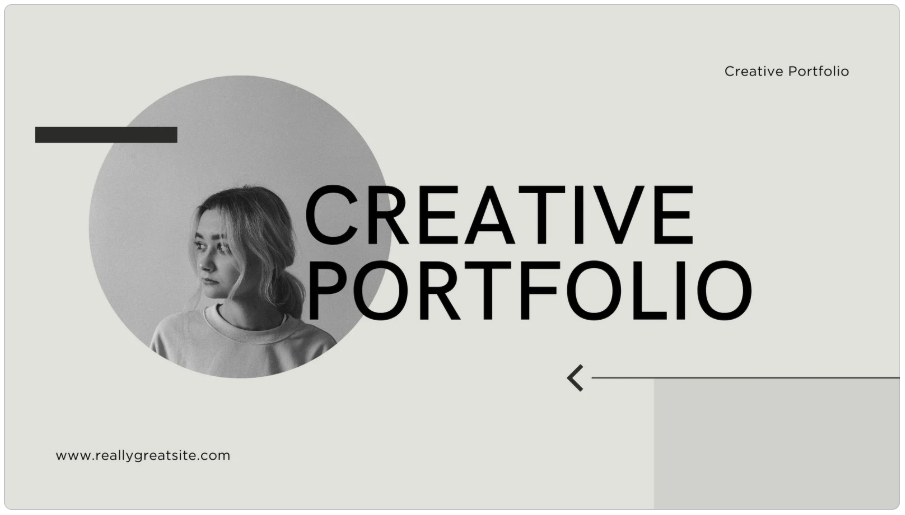 Sample template from canva.com
Sample template from canva.com
Psychology of Portfolio Reception
People process images much faster than text, hence the way the portfolio is presented holds key significance. A well-designed portfolio should be aesthetic, clear, and visually consistent. It's essential to consider appropriate colors, typography, and page layout that guide the audience's sight and makes the portfolio easy to navigate. It's also important to establish hierarchy of information – the most important projects should be highlighted on the initial pages. Additionally, incorporating white space helps focus the attention on projects, lending a professional look to the portfolio. The right visual composition can influence how the audience perceives your skills and experience.
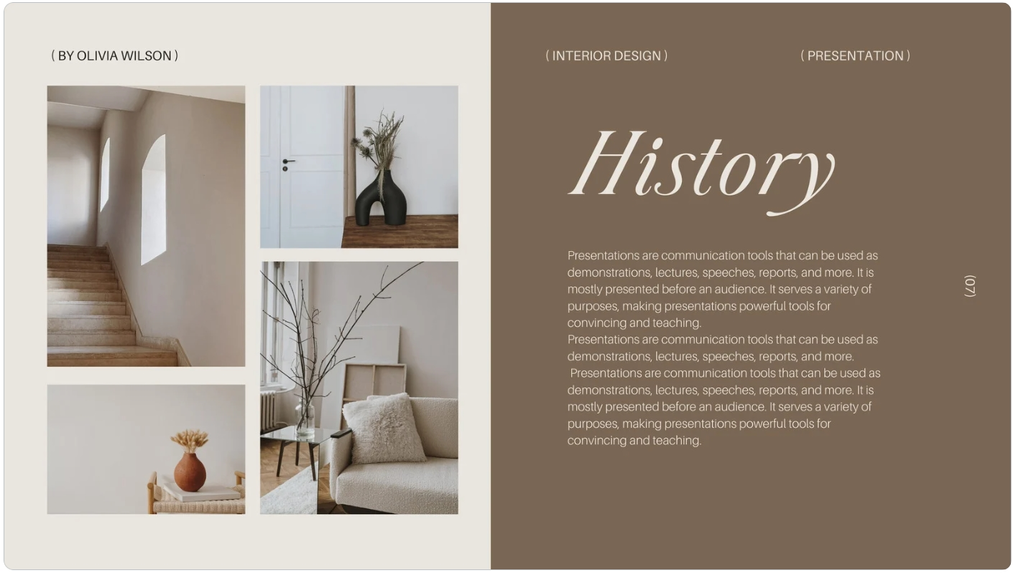 Sample template from canva.com
Sample template from canva.com
Elements to Include in a Portfolio
Portfolio should be organized and easy to browse. It's crucial not to include random projects, but only those that best represent your style and skills. The first impression is crucial, so start with the strongest endeavors. Each project should be accompanied by a brief description, encompassing goals, inspirations, and technologies applied. In addition to visualizations, it's beneficial to add the design process – sketches, mood boards, diagrams – as clients and employers are keen to see how your work unfolds. It's worthwhile to divide the portfolio into thematic sections, e.g., residential interiors, commercial projects, conceptual designs, technical drawings. This division allows the audience to quickly find the information of interest and assess your expertise in various areas.
Portfolio Format - Digital or Print?
Modern portfolios can take various forms. The most popular options include:
- Online Portfolio – Ideal for freelancers and globally operating designers. You can create a website or utilize platforms like Behance, Dribbble, or Archinect.
- PDF Portfolio – An excellent addition to your CV, allowing you to swiftly send your work to potential clients.
- Printed Portfolio – Useful for job interviews and client meetings. A printed portfolio better showcases project details and adds a touch of professionalism.
Tools to Utilize for Portfolio Creation
Depending on your work style, you can use various tools for creating a portfolio. There are numerous options available for both professionals and individuals starting to build their portfolio. The choice of the right tool depends on the preferred presentation form and the intended impact.
- Adobe InDesign – Professional tool for layout of print and PDF portfolios. Ideal for people seeking complete control over the layout, typography, and aesthetic. It enables creating elegant layouts with a large number of visual elements, presenting your projects exceptionally professionally.
- Canva – A simple tool for creating aesthetic presentations. Great for those who lack experience in professional graphic software. With an intuitive interface, one can quickly create attractive portfolios using ready-made templates.
- WordPress, Wix – For creating a professional online portfolio site. These platforms allow showcasing your projects in an interactive manner, facilitating easy browsing for clients. Additionally, a portfolio website offers SEO optimization, increasing visibility in search engines.
- Behance, Dribbble – Social platforms for creative professionals. Publishing your work on these portals enables reaching a wide audience and attracting potential clients or collaborators.
The choice of the right tool depends on your preferences and how you wish to present your projects. It's beneficial to experiment and tailor the portfolio format to the clients' expectations and industry requirements.
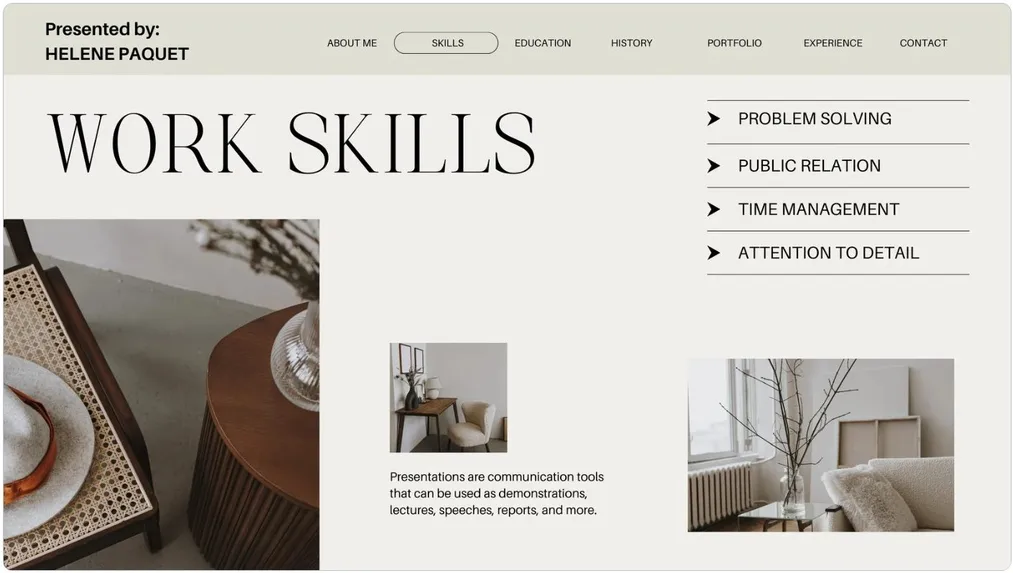 Sample template from canva.com
Sample template from canva.com
Adapting the Portfolio to the Audience
When creating a portfolio, it's beneficial to adapt it to the target audience. If you design residential interiors, showcase projects relevant to individual clients' needs. For commercial interiors, present offices, hotels, or restaurants. If applying to an architectural firm, include conceptual projects, technical drawings, and project documentation. Tailoring the portfolio to the audience enhances its effectiveness and aids in securing the ideal client.
Portfolio - Mistakes to Avoid
Creating a portfolio is a process that requires thoughtful strategy and attention to detail. However, many people make mistakes that can prevent their work from being appreciated or their portfolio from fulfilling its purpose.
- Excessive Number of Projects – A portfolio should contain only your best projects. Information overload can overwhelm the audience and make it difficult to identify your strongest points.
- Lack of Context and Descriptions – Each project should include a brief story: the project's goals, the solutions applied, and the challenges encountered during the execution.
- Unclear Layout and Chaotic Presentation – Clear and logical content placement is crucial. Excessive colors, inconsistent fonts, and disorganized structure can make the portfolio appear unprofessional.
- Low-Quality Graphics – Images and visualizations should be in high resolution. Avoid blurry and poorly cropped images, as they can make your work seem less professional than it actually is.
- Lack of Updates – A portfolio is a document that should be regularly updated. Old and outdated projects can suggest a lack of development and innovation.
- Inappropriate Format for the Audience – If applying to a large company, a PDF or printed portfolio may be more suitable. For individual clients or potential investors, an online portfolio presence is beneficial.
- Lack of Contact Information – Many designers fail to include their contact details in the portfolio. Ensure that the recipient can easily find a way to reach out to you.
- Slow Loading Time for Online Portfolio – If opting for a website, ensure it's optimized for fast loading.
Well-thought-out portfolio not only attracts clients, but also builds your personal brand and increases the chances of getting dream projects. Remember that the key to success is quality, clarity, and regular content updates.
Summary
Well-prepared portfolio is the key to success in the architecture and interior design industry. It should be clear, aesthetic, and include your best achievements. It's worth taking care of various portfolio formats – from a website to a printed version, adapting them to different audiences. Avoiding common mistakes and regular updates will make your portfolio an effective tool for attracting clients and building a brand in the industry.
Read on our blog
-
![How to use Nano Banana Pro and how much does it cost? A practical guide for beginners]()
How to use Nano Banana Pro and how much does it cost? A practical guide for beginners
Learn how to use Nano Banana Pro for free via Gemini, when it’s worth paying, and which solution will be best for you! -
![Artificial intelligence - AI - for furniture manufacturers - see what possibilities it offers!]()
Artificial intelligence - AI - for furniture manufacturers - see what possibilities it offers!
Discover the AI tools and workflows that enable creating packshots, material variants, and interior arrangements: in practice, step by step. -
![Alternative to AutoCAD - Discover GstarCAD with a Perpetual License]()
Alternative to AutoCAD - Discover GstarCAD with a Perpetual License
Looking for a cheaper alternative to AutoCAD? GstarCAD is a professional CAD tool that costs up to 5 times less. See what it offers! -
![What are the most common mistakes made in Archicad by beginners?]()
What are the most common mistakes made in Archicad by beginners?
Are you starting with Archicad? Find out which mistakes beginners most often make and how to avoid them to work more efficiently!
